Interview with Aléa Work
PROCESSO E FUNGHI – THE GARDEN LAB
April 2025
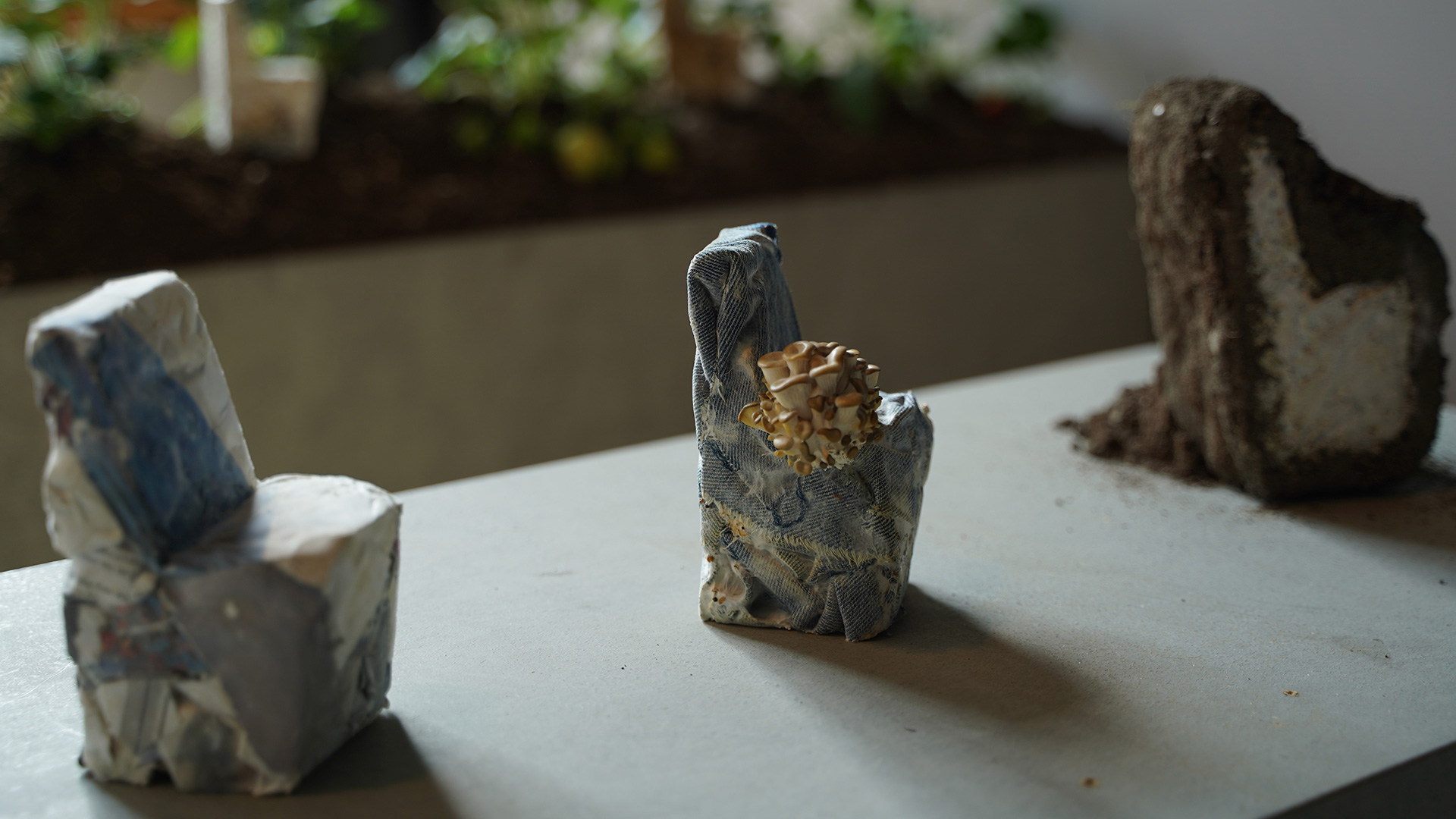
In April 2025, during Milano Design Week, the Paris-based studio Aléa Work presented Processo e Funghi at BASE Milano in collaboration with Domaine de Boisbuchet, as part of the Making Kin show, supported by the Institut Français.
Since their first residency at Boisbuchet in 2021—where they grew their first underground mycelium chair—Aléa has become a recurring presence at the Domaine, leading workshops and developing a growing body of work around myco-fabrication. With Processo e Funghi their collaboration has taken on a new scale, inviting public participation and expanding the boundaries between design, ecology, and material research.
This interview, conducted by Guillermo Gil Fernández and Pablo Sevilla from Domaine de Boisbuchet’s team, delves into Aléa’s evolving methodology, the performative and ethical dimensions of designing with living systems, and the broader vision behind their Back to Dirt approach, including their latest line of inquiry: the experimental application of mycelium to textiles and fiber-based materials.
1. To begin, could you briefly introduce yourselves and explain how your collaboration with Domaine de Boisbuchet began?
We are Aléa, a design studio based in Paris, collaborating with living systems and developing open-ended processes. Our practice centers on working with mycelium, the root system of fungi.
Our connection with Domaine de Boisbuchet began in 2014, when we participated in the USM “Rethink the Modular” project. We returned eight years later after receiving the Boisbuchet Residency Award in 2021 which gave us the opportunity to further our process in growing mycelium directly in soil. This was the week we grew our first chair below ground.
Since then, we’ve returned regularly to lead workshops as part of the summer program, including a collaboration with architecture firm PARK Associati. This summer we’re continuing our collaboration by exploring mycelium and textiles.
2. What does The Garden Lab represent for you, and how did the idea to present it in Milan come about?
The Garden Lab is both a space and a process, part laboratory, part garden, where material research, collaboration, and growth unfold together. It embodies a way of designing that is responsive, slow, and deeply rooted in context.
The idea emerged from our desire to work with living systems within living environments, rather than in isolated or sterile conditions. The Lab isn’t confined to a single space; it’s a mobile and evolving framework that adapts to its surroundings.
Boisbuchet invited us to present this ongoing, collective research as part of the Making Kin show, at BASE Milano, titled Processo e Funghi.
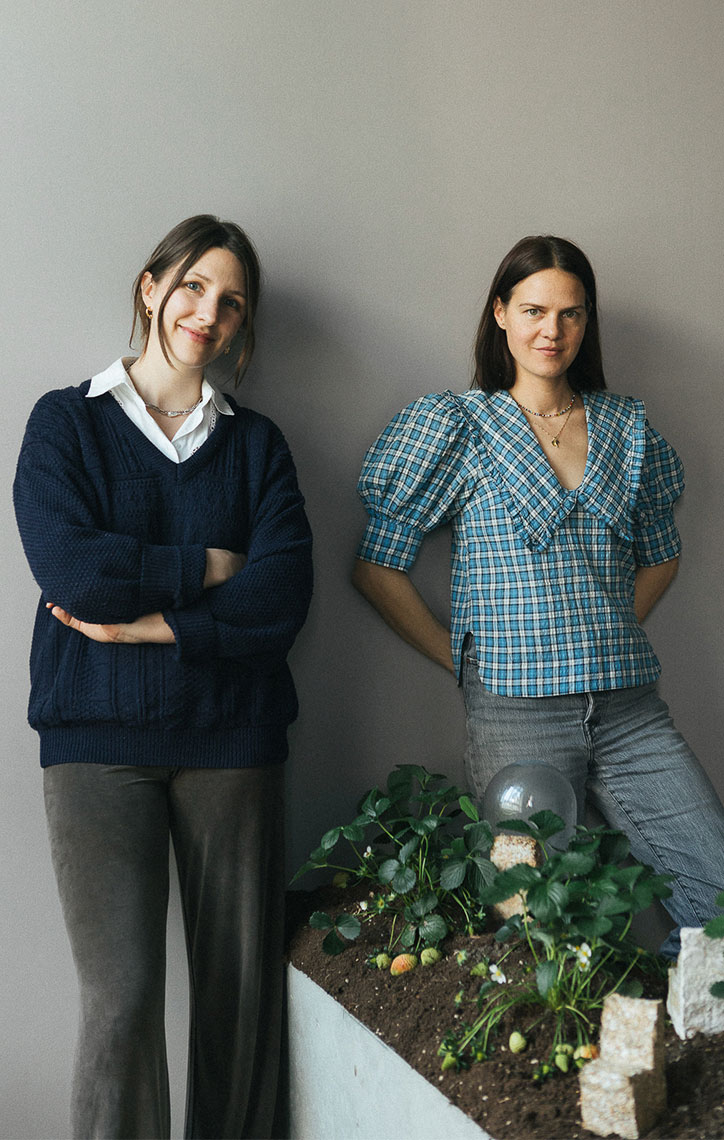
3. The title Processo e Funghi suggests a performative dimension to design. How do you understand the role of time, material, and unpredictability in your work with mycelium?
Unpredictability is central to our process. Rather than imposing a fixed form, we engage in an ongoing negotiation with the material. Mycelium grows according to its own rhythm, so working with it requires us to adapt to a different timeline. Processo e Funghi highlights design as an evolving practice, one where material agency and environmental conditions are just as significant as human intention.
4. Your Back to Dirt method involves cultivating mycelium directly in soil, bypassing sterilization and synthetic molds. What are the implications of this shift from conventional myco-fabrication methods?
By growing mycelium directly in living soil, we move away from the controlled, sterilized environments typical of myco-fabrication and embrace a more open-ended approach.
Although at this point our process allows only for limited forms and scale, growing objects underground has the advantage to be applied ultra-locally and is fully independent of fossil fuels. Also we explore the regenerative and remediative capacities of the mycelium which opens the potential to depollute soils and reintroduce local biodiversity
Working this way challenges industrial notions of uniformity and efficiency. Instead, it proposes a model of production that is site-specific, adaptive, and entangled with the environment. It’s slower and less predictable.
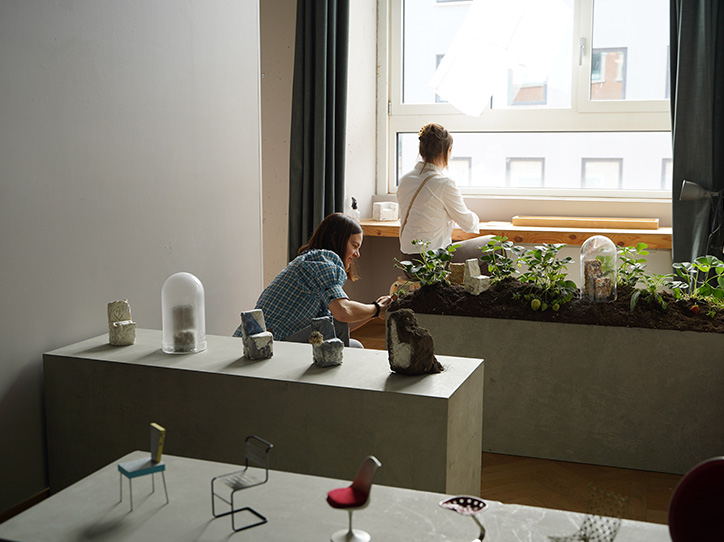
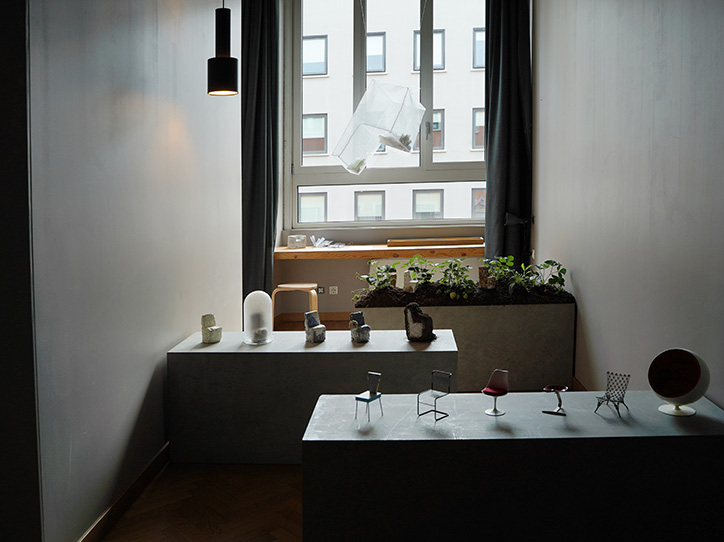
5. Visitors are invited to “feed” the mycelium with waste and thoughts. How does this open-ended participation influence the final form of the work, and how does it challenge the conventional idea of authorship in design?
At BASE Milano we saw an opportunity to open up the process, to make it less about a finished object and more about shared experience. Usually, when we grow a chair, we put a small note inside – something personal, a message for the fungi to consume. It’s become a kind of ritual for us.
This time we wanted to see what would happen if that gesture was multiplied, if the thoughts and intentions of many could be part of the substrate. So we asked visitors to leave behind scraps of paper with whatever they wanted to say: questions, reflections, messages for the fungi. These were added to the material that will grow into a new chair this summer at Boisbuchet.
It’s a way of handing over some authorship. The final piece is shaped not just by us, but by the people who interacted with it, and by the mycelium itself. It blurs the line between maker and participant, and between intention and outcome. There’s something beautiful in not knowing exactly what will emerge.
6. From cultivating chairs in your early projects to experimenting with mycelium in textiles-how has your research into living materials evolved? What potential do you see in the intersection between mycology and textile design?
Over time, our work has shifted from focusing on shaping the material into something fixed to finding a balance between guiding it and letting go, creating space for the mycelium to express itself. You can see this in our recent textile experiments, where the process feels even more open-ended.
We’re exploring how mycelium can interact with existing fabrics, not just as a structural element, but as a way to modify, repair, or even transform them. Our new work explores mycelium’s capacity to digest color. We’re experimenting with folding techniques that guide this process, resulting in fascinating patterns. There’s also great potential in its ability to break down synthetic dyes, offering a form of remediation.
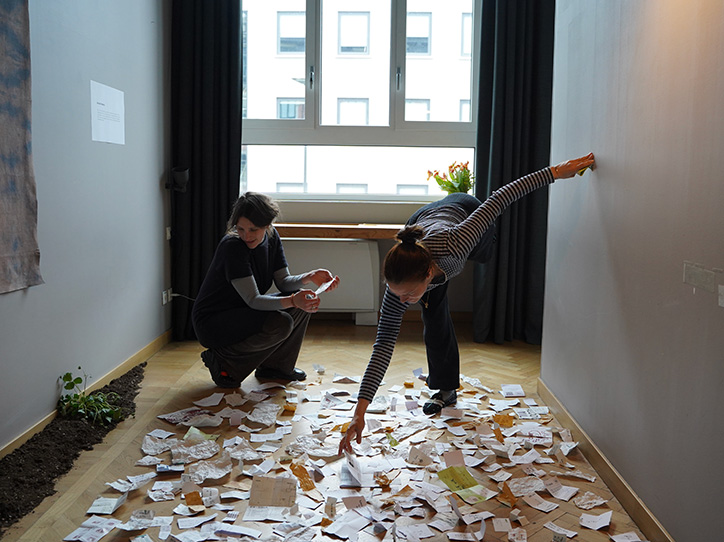
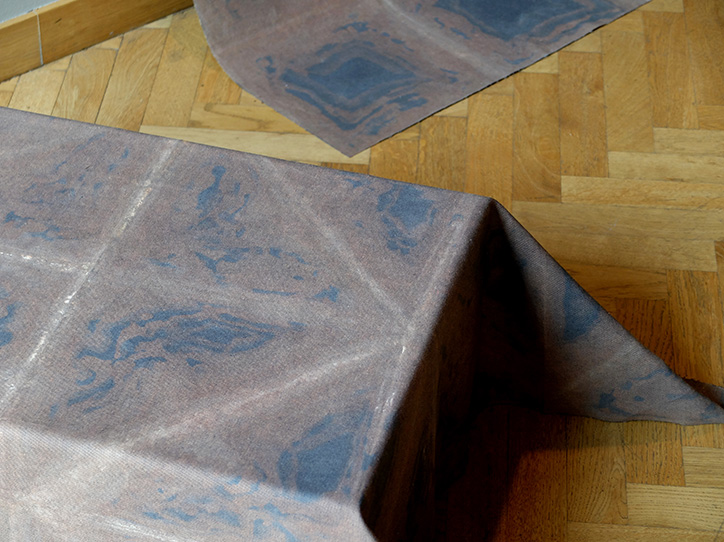
7. Your practice navigates the boundaries between design, art, biology, and agriculture even. How do you manage this porousness between disciplines, and what challenges or opportunities does it create?
Our work is inherently transdisciplinary. We collaborate with experts across different domains – scientists, architects, textile designers… We take on different roles depending on the project.
We don’t consider ourselves “bio-designers” because we don’t want to be restricted by any single category. This flexibility has opened up many opportunities – It allows us to move beyond traditional academic research and apply our work in more informal, accessible ways. It gives us the chance to engage with the public and experiment freely, without the limitations of formal processes.
One challenge is finding a common language that connects all these different fields, its something we’re always working on.
8. Design is often associated with control and precision, whereas your work proposes co-authorship with living systems. What are the ethical and aesthetic implications of that shift?
Working with living materials, especially in our non-sterile practice, requires a shift in mindset. It challenges traditional notions of control and precision.
New narratives and aesthetics emerge in the process, ones that break away from the industrial and petroleum-based methods we’ve become accustomed to. It fosters a sense of care and cooperation, rather than mastery and competition, encouraging us to embrace raw, imperfect forms and finishes.
Letting go of some control and welcoming unpredictability in the process leads to results we couldn’t have anticipated, new shapes, textures, and aesthetics that emerge naturally. Many of our discoveries have come from accidents, moments when things didn’t go as planned but led us to unexpected, meaningful results. This encourages us to rethink what “finished” really means.
9. What role has Domaine de Boisbuchet played in the development of your practice? How has its pedagogical and experimental approach influenced your way of working?
Domaine de Boisbuchet has been essential to Aléa’s growth from the very beginning. As an open-air laboratory, it has always been a place where we could experiment freely, learn, and truly connect with our environment.
It’s not just about theory, it’s about getting our hands dirty, being present with the materials and immersing ourselves. Boisbuchet has also given us the chance to be part of a global community of like-minded individuals, which has been a constant source of inspiration and pushed us to keep evolving and expanding our practice.
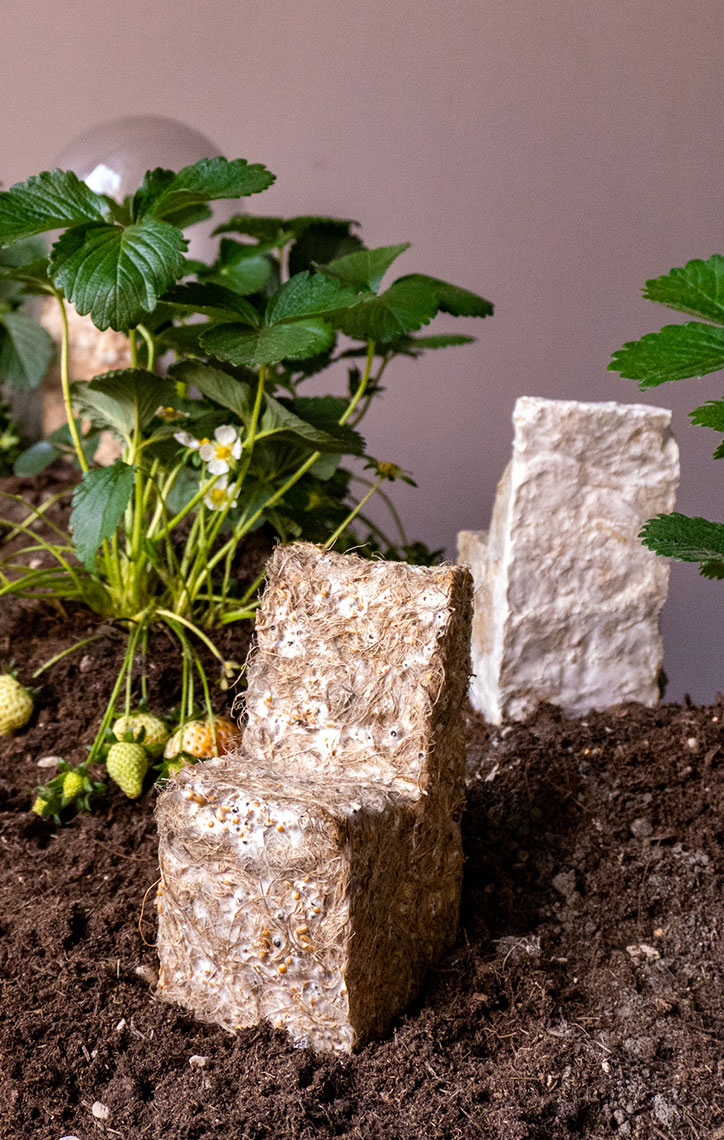
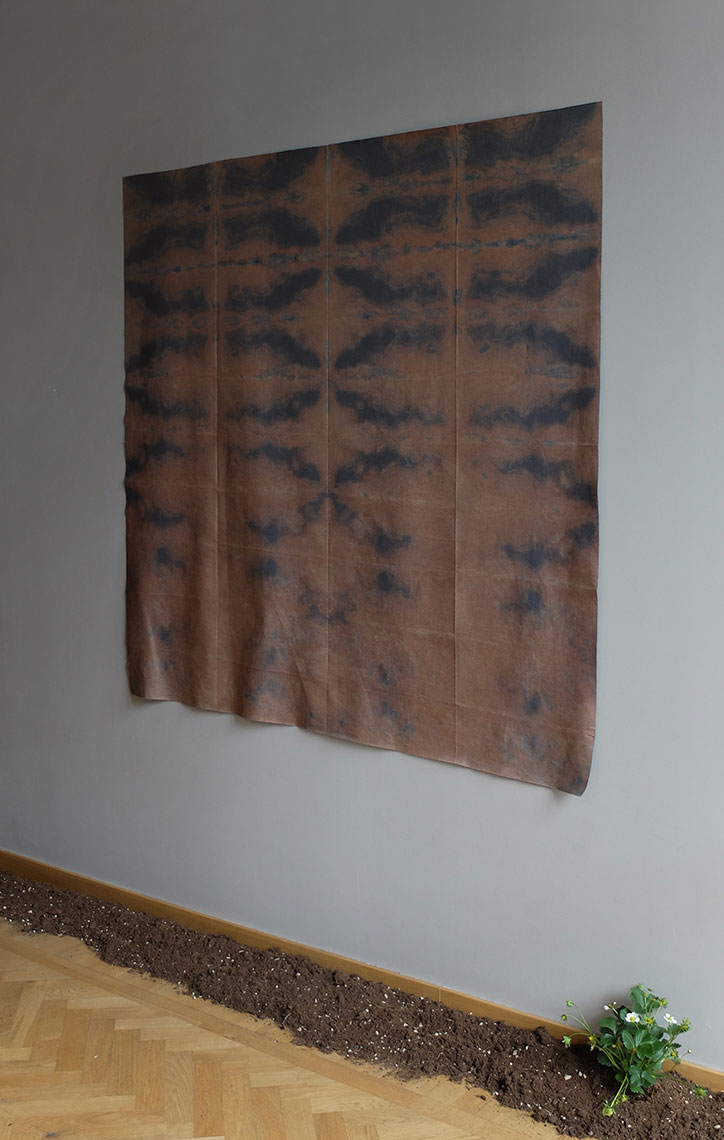
10. Finally, what’s next for The Garden Lab? Do you plan to continue developing this research, or are you looking toward new ways of collaborating with living systems?
We plan to keep developing our processes while integrating more living systems, materials and people.
The next steps involve continuing to work with designers, universities, and students, while also fostering more transdisciplinary collaborations within industry. We’re looking to organize workshops and long-term projects with companies, where we can experiment, test, and develop new regenerative approaches to thinking, making, organizing, and producing.
At its core, The Garden Lab is about encouraging more sustainable, regenerative approaches that anyone can engage with. We hope it can contribute to a broader shift in how industries and individuals can relate to design, production, and the living world.
This summer Aléa will return to Domaine de Boisbuchet to lead a new workshop titled Life in-between: Mycelium and Textiles, taking place from July 20th to July 30th, 2025. Building on their recent explorations, the workshop will offer participants the chance to engage hands-on with mycelium as a living material and experiment with its integration into textile processes. Those interested in joining can find more information and register through our website.

